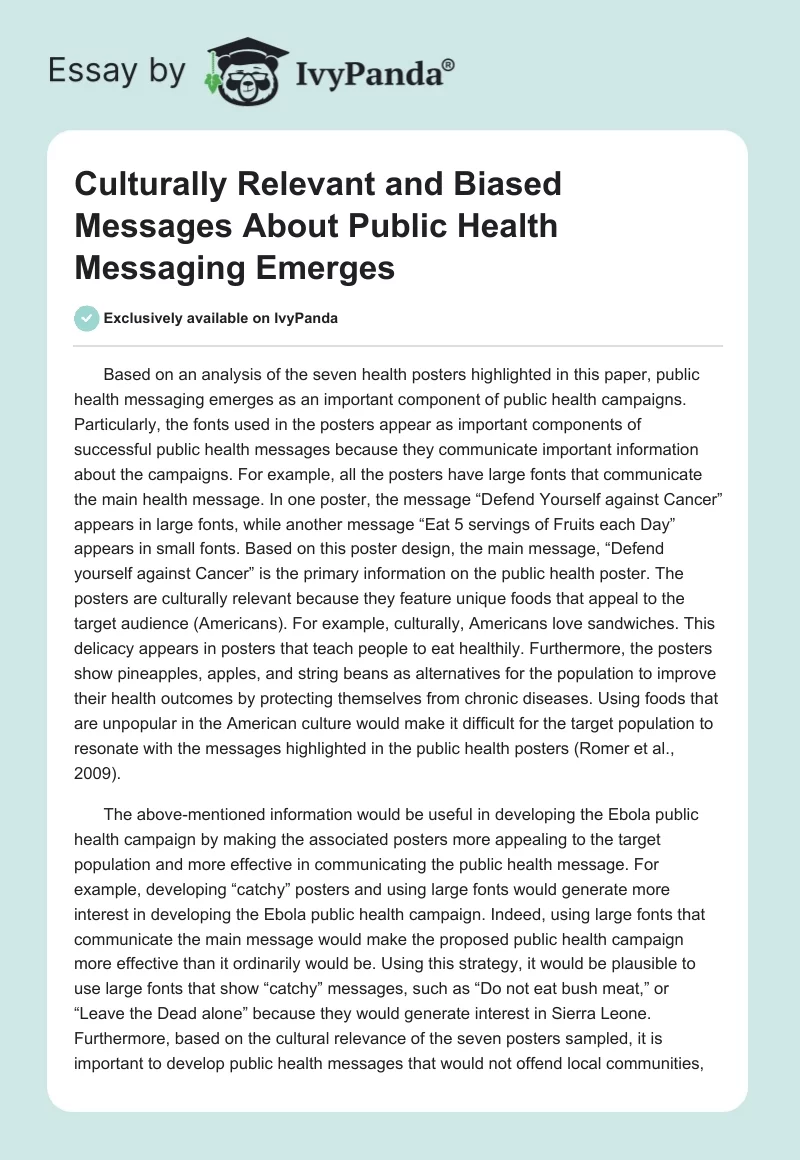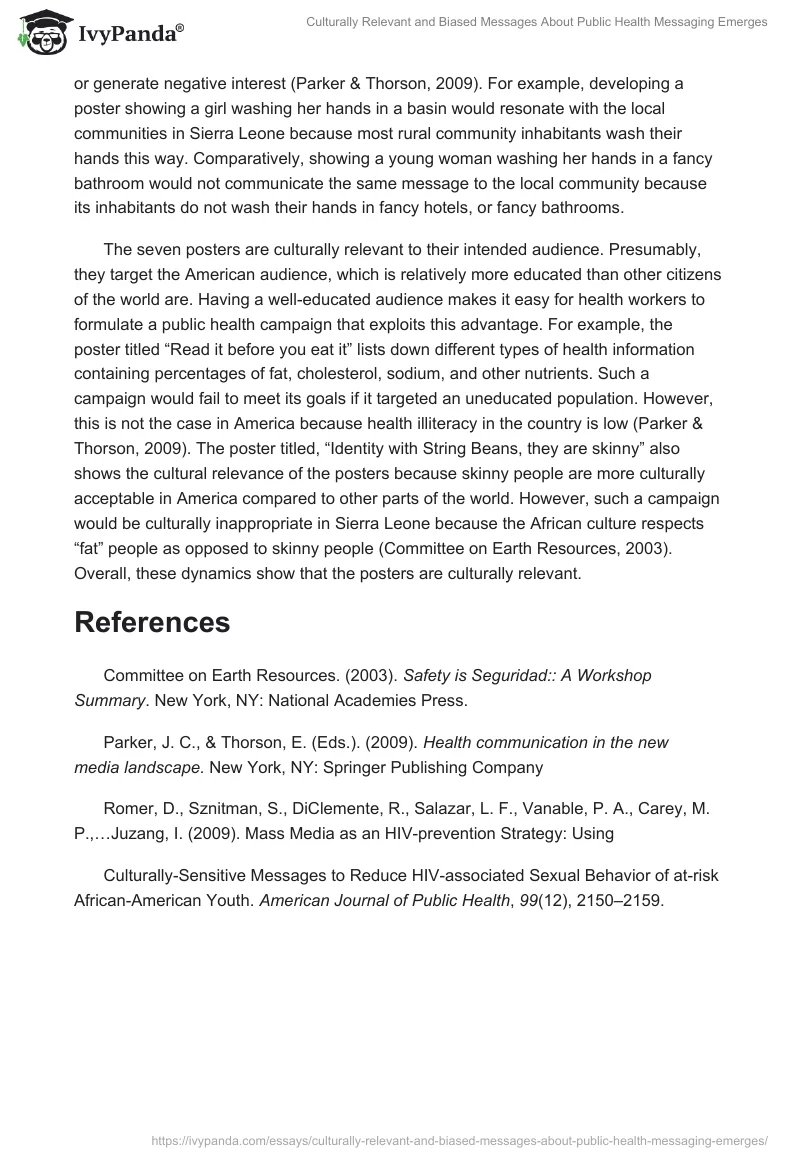Based on an analysis of the seven health posters highlighted in this paper, public health messaging emerges as an important component of public health campaigns. Particularly, the fonts used in the posters appear as important components of successful public health messages because they communicate important information about the campaigns. For example, all the posters have large fonts that communicate the main health message. In one poster, the message “Defend Yourself against Cancer” appears in large fonts, while another message “Eat 5 servings of Fruits each Day” appears in small fonts. Based on this poster design, the main message, “Defend yourself against Cancer” is the primary information on the public health poster. The posters are culturally relevant because they feature unique foods that appeal to the target audience (Americans). For example, culturally, Americans love sandwiches. This delicacy appears in posters that teach people to eat healthily. Furthermore, the posters show pineapples, apples, and string beans as alternatives for the population to improve their health outcomes by protecting themselves from chronic diseases. Using foods that are unpopular in the American culture would make it difficult for the target population to resonate with the messages highlighted in the public health posters (Romer et al., 2009).
The above-mentioned information would be useful in developing the Ebola public health campaign by making the associated posters more appealing to the target population and more effective in communicating the public health message. For example, developing “catchy” posters and using large fonts would generate more interest in developing the Ebola public health campaign. Indeed, using large fonts that communicate the main message would make the proposed public health campaign more effective than it ordinarily would be. Using this strategy, it would be plausible to use large fonts that show “catchy” messages, such as “Do not eat bush meat,” or “Leave the Dead alone” because they would generate interest in Sierra Leone. Furthermore, based on the cultural relevance of the seven posters sampled, it is important to develop public health messages that would not offend local communities, or generate negative interest (Parker & Thorson, 2009). For example, developing a poster showing a girl washing her hands in a basin would resonate with the local communities in Sierra Leone because most rural community inhabitants wash their hands this way. Comparatively, showing a young woman washing her hands in a fancy bathroom would not communicate the same message to the local community because its inhabitants do not wash their hands in fancy hotels, or fancy bathrooms.
The seven posters are culturally relevant to their intended audience. Presumably, they target the American audience, which is relatively more educated than other citizens of the world are. Having a well-educated audience makes it easy for health workers to formulate a public health campaign that exploits this advantage. For example, the poster titled “Read it before you eat it” lists down different types of health information containing percentages of fat, cholesterol, sodium, and other nutrients. Such a campaign would fail to meet its goals if it targeted an uneducated population. However, this is not the case in America because health illiteracy in the country is low (Parker & Thorson, 2009). The poster titled, “Identity with String Beans, they are skinny” also shows the cultural relevance of the posters because skinny people are more culturally acceptable in America compared to other parts of the world. However, such a campaign would be culturally inappropriate in Sierra Leone because the African culture respects “fat” people as opposed to skinny people (Committee on Earth Resources, 2003). Overall, these dynamics show that the posters are culturally relevant.
References
Committee on Earth Resources. (2003). Safety is Seguridad:: A Workshop Summary. New York, NY: National Academies Press.
Parker, J. C., & Thorson, E. (Eds.). (2009). Health communication in the new media landscape. New York, NY: Springer Publishing Company
Romer, D., Sznitman, S., DiClemente, R., Salazar, L. F., Vanable, P. A., Carey, M. P.,…Juzang, I. (2009). Mass Media as an HIV-prevention Strategy: Using
Culturally-Sensitive Messages to Reduce HIV-associated Sexual Behavior of at-risk African-American Youth. American Journal of Public Health, 99(12), 2150–2159.


